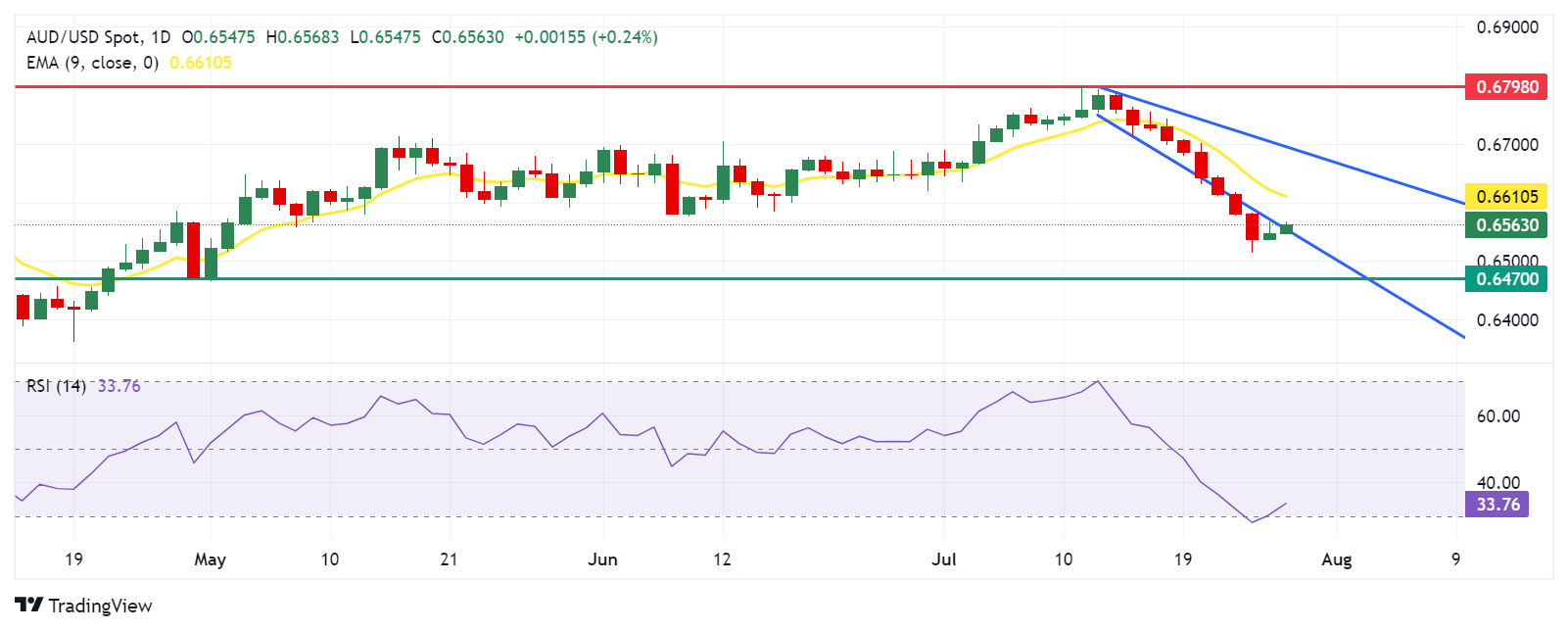
■ The Australian Dollar gains ground as the RBA is expected to hold interest rates next week.
■ National Australia Bank (NAB) anticipates that the RBA’s cash rate will remain stable at 4.35% until May 2025.
■ The US Dollar loses ground as the Fed is expected to deliver three rate cuts this year.
The Australian Dollar (AUD) extends its gains against the US Dollar (USD) for the second session on Monday. This upside is attributed to the hawkish sentiment surrounding the Reserve Bank of Australia’s (RBA) policy stance. Unlike other major central banks, the RBA is expected to delay easing its policy tightening due to persistent inflationary pressures and a tight labor market.
Australian Retail Sales for June will be closely watched on Tuesday. On Wednesday, the second-quarter Consumer Price Index (CPI) data will be released, potentially providing insights into the future direction of domestic monetary policy. Some economists are cautioning against further tightening due to increased recessionary risks. Last week, data indicated that private sector growth in Australia slowed in July, with manufacturing activity remaining contractionary and growth in the services sector decelerating.
The AUD/USD pair gains ground due to a weaker US Dollar. Signs of cooling inflation and easing labor market conditions in the United States (US) have fueled expectations of three rate cuts this year by the Federal Reserve (Fed), starting in September.
Daily Digest Market Movers: Australian Dollar improves due to the hawkish mood surrounding the RBA
National Australia Bank (NAB) anticipates that the Reserve Bank of Australia's (RBA) cash rate will remain stable at 4.35% until May 2025, according to a recent NAB Economics outlook. Looking ahead, the NAB Economics team predicts a decline to 3.6% by December 2025, with further decreases expected in 2026.
In a media release on Monday, the Australian Prudential Regulation Authority (APRA) warned that arrears rates are increasing slowly. Following their latest quarterly assessment of domestic and international economic conditions, APRA announced that they will keep macroprudential policy settings on hold. These comments reflect their ongoing evaluation of both domestic and global economic environments.
On Friday, the US Personal Consumption Expenditures (PCE) Price Index rose by 2.5% year-over-year in June, down slightly from 2.6% in May, meeting market expectations. On a monthly basis, the PCE Price Index increased by 0.1% after being unchanged in May.
The US Core PCE inflation, which excludes volatile food and energy prices, also climbed to 2.6% in June, consistent with May's increase and above the forecast of 2.5%. The core PCE Price Index rose by 0.2% month-over-month in June, compared to 0.1% in May.
Bank of America suggests that robust economic growth in the United States enables the Federal Open Market Committee (FOMC) to "afford to wait" before implementing any adjustments. The BofA notes that the economy "remains strong" and expects the Fed to begin rate cuts in December.
Last week, concerns about the weak Chinese economy were heightened by an unexpected rate cut from the People's Bank of China (PBoC). The People’s Bank of China (PBOC), cut the one-year Medium-term Lending Facility (MLF) rate from 2.50% to 2.30% on Thursday. Additionally, the Bank of China, one of the world's largest banks, announced a 10-20 basis points cut in time deposit rates. Any change in the Chinese economy could impact the Australian markets as both countries are close trade partners.
Technical Analysis: Australian Dollar moves above 0.6550
The Australian Dollar trades around 0.6560 on Monday. The daily chart analysis shows that the AUD/USD pair has returned to the descending channel, indicating a potential weakening of the bearish bias. The 14-day Relative Strength Index (RSI) is slightly above 30 level, suggesting the currency pair may be due for a potential correction soon.
The AUD/USD pair could find immediate support at the lower boundary of the descending channel around the key level of 0.6550. A break below this level could exert pressure on the pair to navigate the region around the 0.6470 level.
On the upside, key resistance appears at the nine-day Exponential Moving Average (EMA) at 0.6610. A break above this level could lead the pair to test the upper boundary of the descending channel around the psychological level of 0.6700, with a potential aim for a six-month high of 0.6798.
AUD/USD: Daily Chart
* The content presented above, whether from a third party or not, is considered as general advice only. This article should not be construed as containing investment advice, investment recommendations, an offer of or solicitation for any transactions in financial instruments.




